Delhi is a great city, where you could easily spend a week. The list of sights and activities is endless. But if you do not have so much time, here are some recommendation about the best places to visit in Delhi in two days.
I’m an international tourist guide who has covered the Golden Triangle itinerary more than 20 times. I made the guide for the best things to do and places to visit in Delhi with my local colleague and his insider tips.
So let us show you every face of Delhi, provide you with a complete guide, and become an insider with us.
Some useful information for your visit to Delhi
- At the time of writing 1 USD = 72 INR.
- The traffic jam in the rush hours requires flexibility when planning your daily program. The first thing my friend taught me: „There is no timing in India!” So be patient and accept it as it is! Delhi is one of the most populated cities with almost 30 million inhabitants and occupies 50km x 50km. It is impossible to keep track of its population, and even the locals cannot exactly tell you as it grows with almost a million every year. You can drive for hours inside the city to cover enormous distances.
- There is usually a big smog in Delhi due to heavy pollution, which often limits visibility. You have the feeling that there is a constant fog.
- You have to remove your shoes when you enter a Hindu, a Sikh temple, a mosque, or the memorial of Mahatma Gandhi.
- Donate some small money when you enter a temple.
- Dress up modestly even if you suffer from the heat. Cover at least your knees and shoulders respecting the local customs.
- But stay patient with the beggars that show up around the touristic monuments. Do not forget that 30% live under the poverty line, and most people can only afford a basic lifestyle.
- Don’t use public transport at night in Delhi, especially not as a woman. It does not mean you should sit in your hotel, but go on a guided tour or take a taxi.
- Beware of your belongings all the time, especially at crowded places, like the Delhi metro. In India, it is easy to get distracted by the noise, the crowd, and all the things happening around you.
- There is a security control at every monument, at the entrance of shopping malls, cinemas, and sometimes at unexpected places. It is nothing serious and goes fast. The problem is that there are different restrictions and very difficult to follow what you can and cannot take with you to enter the place. In general, you cannot take food and drinks (apart from water), a knife, sometimes cigarettes and lighters, or electronics with you. The strictest entry rules apply to the Akshardham temple, where no bags, cameras, mobile phones, or any other electronics, food (including candies), drinks other than water are allowed.
- Always fix the price with the auto-rickshaw or taxi driver before you take a seat.
- It is no problem to get alcohol in Delhi as there are plenty of wine shops. Prices are the same in both private and government shops. Whisky, Indian rum, and beer are the most popular. The price figures on the bottle.
Pin it for later!
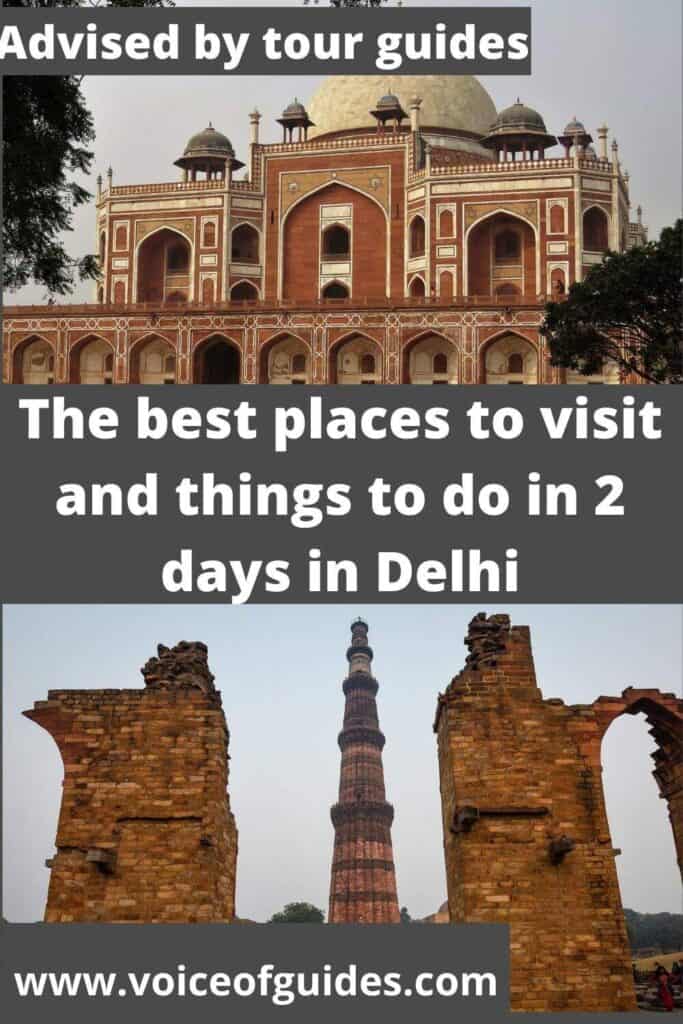
How to get around in Delhi
The sights in Delhi are in different parts of the city, so you need to cover great distances. You have more options depending on your time, and about what suits you the most as for transportation:
1. Uber taxi: You can book a taxi with Uber, which is inexpensive in Delhi (around 10 INR/km)
2. Auto rickshaw: It is another option and great fun (there is no fixed price, so bargain before you start the ride). If the driver uses a taxi meter, the government rate is 25 INR for the first 2kms and 9 INR per kilometer after.
3. Metro: The Delhi metro network encompasses the whole city. The longest metro line is 60 kilometers. You can get to most places of interest with the metro (Red Fort, Jama Masjid, Qutub Minar, Lotus temple, Connaught Place, Akshardham temple). Rajiv Chowk is the principal station in Delhi downtown, where two lines cross. The metro operates from 6 am to 11 pm. However strange it may sound, you are not allowed to carry firecrackers, liquor, and plastic guns on the metro. The biggest metro station is Kashmere gate ISBT. It is also the central bus station of Delhi, where three metro lines intersect.
There are different options to travel with the Delhi metro:
1. Buy a metro card at the metro station for 100 INR. You can recharge it with any amount between 200 INR-1000 INR online or at the metro station.
2. Buy a 1-day metro card for 150 INR, and you can travel with that as many times as you want during that day.
- There is a 3-day metro card for 300 INR as well.
- In any case, when you return the card before you leave the city, you get a 50 INR refund back.
- 4. If you have a tight schedule, go for a daily package tour that covers the famous sights in Delhi. You can choose a thematic trip that matches your interests.
- 5. You can rent a private car with a driver for a day. A small car costs around 1500 INR (20 USD) for 8 hours and 80 kilometers including the driver. Only the parking fees must be paid extra. You can get a driver and a car for 200 km and 12 hours for 45 USD/day.
- 6. There are buses with and without A/C in Delhi operated by DTC (Delhi Transport Corporation). The price of a bus ticket varies according to the distance you cover.
Non-air-conditioned bus: 5-15 INR
Air-conditioned bus: 10-25 INR.
1-day bus tickets with unlimited bus rides cost 40 INR or 50 INR depending on if you take the one with A/C.
Important: Arvind Kejriwal, the chief minister of Delhi, introduced in 2020 that every woman can travel free of cost with an air-conditioned bus, including foreigners!
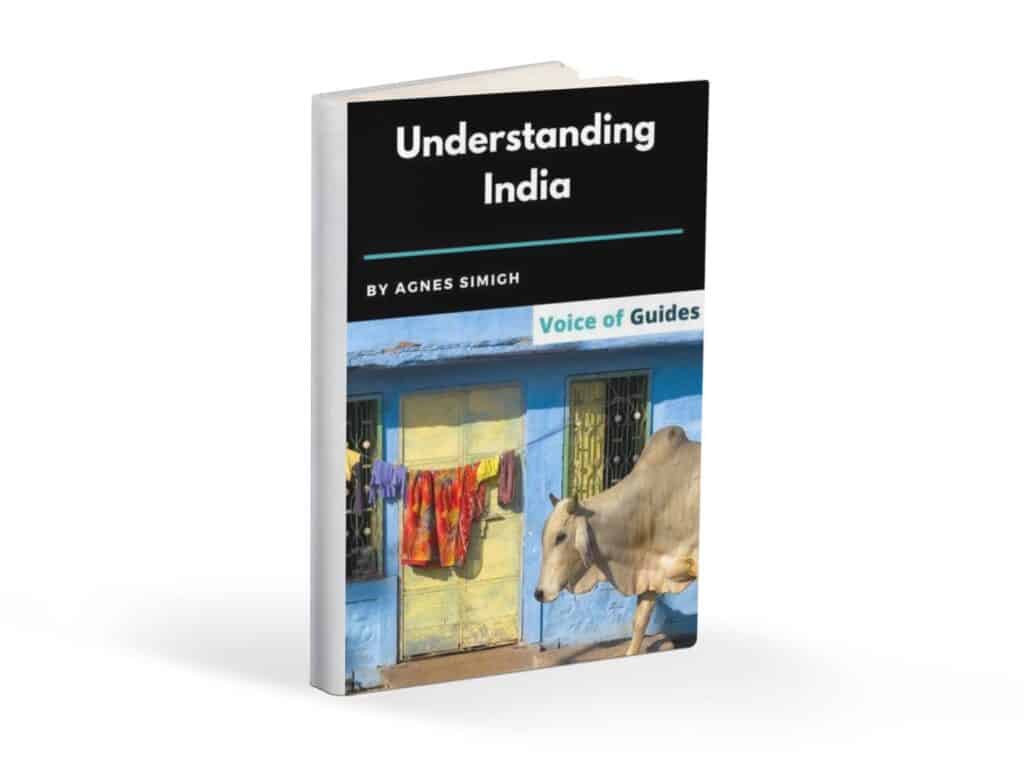
How to travel from Delhi to other cities in India
1. Bus: The Maharana Pratap International Bus terminal at Kashmere gate is the central metro station in India. It only serves state buses. If you want to catch a private bus, then book your ticket at www.redbus.com. They will inform you where you need to wait for the bus, for example at the pillar under the metro line. (Do not laugh, this is India).
2. Train: You will either take trains to other cities within India from the Old Delhi or the New Delhi Railway station. The Old Delhi Railway station is near Chandni Chowk, and the New Delhi Railway Station is near Pahar Ganj. India has no international train connection with any other countries anymore. Due to conflicts with Pakistan, it does not operate anymore.
3. Flight: There are three terminals at the Indira Gandhi International airport. Terminal 1 and 2 only serve domestic flights, while Terminal 3 serves domestic and international flights.
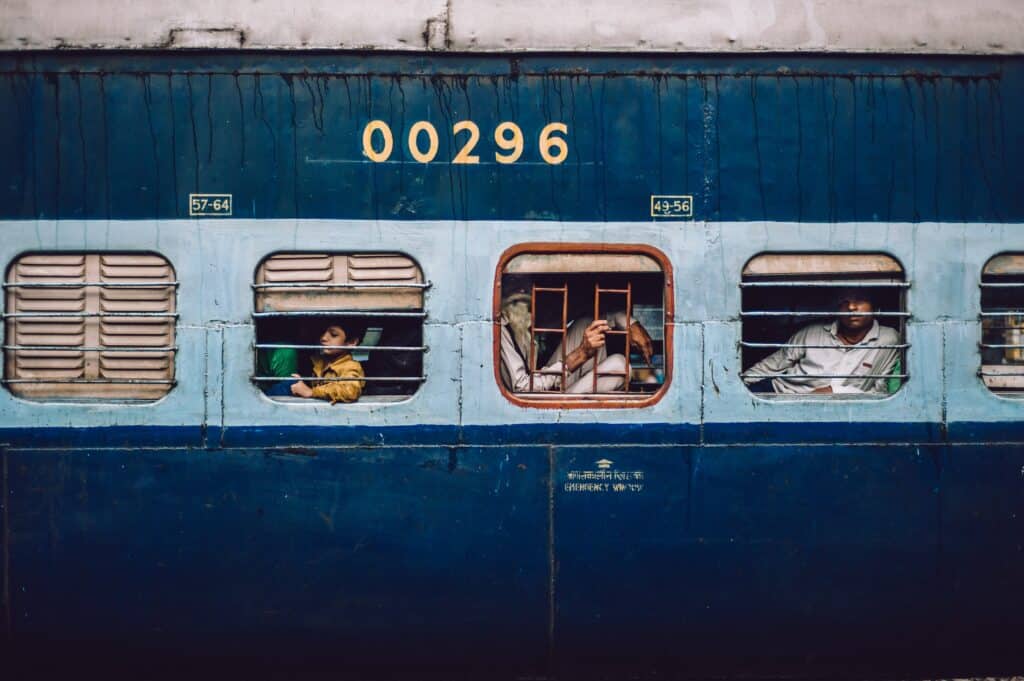
Is Delhi safe to visit?
During the day, you should not have so many worries about traveling solo in Delhi. Beware of your valuables because pickpockets are everywhere. But in the evening, better do not to walk outside, especially not as a female tourist. You may have read that New Delhi has one of the worst rates of sexual violence in the world. There have been mass protests since 2012 when the bus driver and his friends raped a girl traveling on the bus back home with her fiancé. She endured such pain and internal injuries that she could not survive. That was the point when the whole of India realized that something must change. Since then, the punishment for sexual harassment has become much more severe. But the problem is still existent.
If you still want to enjoy some evening programs, take a private cab at night, or go on an organized evening tour. That’s the best way to enjoy some nightlife.
Another thing: Delhi and Mumbai are the scenes of terrorist attacks from time to time. Islam extremists/Kashmir separatist groups, like the Lashkar-e-Taiba, commit these attacks and target touristic sights, crowded buses or railway stations, and markets.
Where to sleep in Delhi?
Paharganj has been the most popular place for hippies and backpackers, close to the Connaught Place in downtown since the 1970s. Here you can get a hostel for only 600-800 INR/night. There is an endless choice of restaurants and shops in Paharganj. But things change. Paharganj has recently gained a bad reputation due to sexual crimes, drug-trafficking, gambling, scams, and poverty. Muggers snatch wallets, phones, and other valuables. The area around Paharganj is packed with multi-story brothels with sex workers, including minor girls from the neighboring countries. They advise both Indian and foreign tourists to switch to the cleaner and newer part of South Delhi, the Hauz Khas. Hauz Khas has several hotels for every budget and is famous for its great nightlife with excellent pubs and bars.
Karol Bagh is another good option with plenty of hotels in a safe area. The market is one of the biggest in Delhi where you can find do shopping for a low price. The hotel prices range between 1500-2500 INR.
What to visit in Delhi in the evening
- Walk around the India gate illuminated at night
- Visit the Akshardham temple in the evening with the light show
- Go to the Gurudwara Bangla Sahib Sikh temple and immerse in the spirituality of the place with locals.
- Go to a bar, restaurant, or disco at Connaught place or in Hauz Khas.
Some of the best bars in Hauz Khas village: https://indiachronicles.com/5185-resto-bars-in-hauz-khas-village-best-bars-in-hauz-khas-village-best-pubs-in-hauz-khas-village.html
Other good bars at Connaught place are: Tamasha, QBA, Hot Mess Bar, Lord of The Drinks, Farzi Café
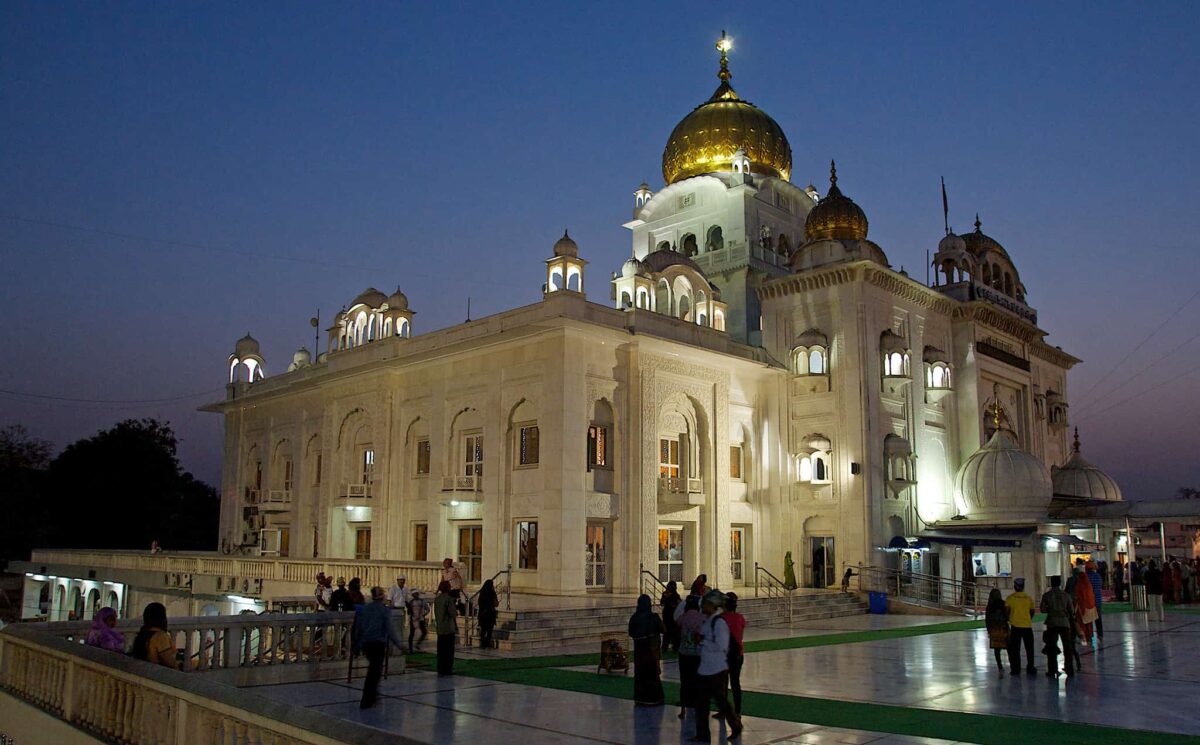
Historical places to visit in Delhi
Qutub Complex – with the oldest iron pillar and the tallest brick minaret in the world (heritage sight)
The Qutub Complex is the most important heritage site of Delhi. It takes us back to the time of the Afghan rulers. They ruled this part of India for 300 hundred years until the Moghul Empire took over the power in 1526. The biggest attractions of the complex are the Qutub minaret and the iron pillar.
The Qutub Minar (named after the first Afghan ruler) is the tallest minaret made of bricks with 72.5 meters. The bottom of the minaret is 14.5 meters wide, whereas the top is as narrow as 2.75meters. The Afghan-style minaret was built at the end of the 13th century and became the symbol of Delhi.
The 1600 years old legendary iron pillar of Delhi miraculously survived the times and stands in the center of the complex. It is incomprehensible even for the researchers how it could stay intact for so long without corrosion. The Delhi climate probably created a protecting layer around the pillar that made it resistant.
The pillar stood earlier in front of a Hindu temple in Uttar Pradesh state and was moved to Delhi in the 12th century.
Opening hours: From sunrise to sunset
Entrance fee: 600 INR, video fee: 25 INR
The Delhi Red Fort (heritage sight)
The palace complex surrounded by massive red sandstone walls served as the capital of the Mughal Empire in the 17th century.
Shah Jahan, the constructer of the Taj Mahal, moved his capital from Agra to Delhi. He built a royal residence similar to the one in Agra. The Lahore gate with the Indian flag hauled up looks probably familiar from photos. The prime minister of India gives a speech every year on the 15th of August, the Day of Independence from here.
The royal palaces behind the wall were once decorated with semi-precious stones, silver, and gold paint. But the British and Jat ethnic groups plundered the fort. On top, most of the royal pavilions are under construction at the moment. Honestly, if you visit the Agra Fort, then the one in Delhi is somewhat disappointing, and for that, it takes too much time.
Entrance fee: 600 INR, video fee 25 INR
Opening hours: sunrise to sunset
The best two-week itinerary in India including the Golden Triangle when you are the first time India
Jama Masjid – the biggest mosque in India (heritage sight)
Shah Jahan, the Mughal ruler, built the largest mosque of India right after the Red Fort. The Mughals arrived from Central Asia to India and dominated north-and central India for 300 hundred years until the British introduced its direct rule in India in 1857. The mosques in India are big open courtyards, encircled with a narrow covered corridor, with only a small capacity for prayers. During Friday prayers or any important Muslim celebrations, the devotees occupy the courtyard.
Opening hours: 7-12 am, 1.30- 6.30 pm
Entrance fee: free of cost
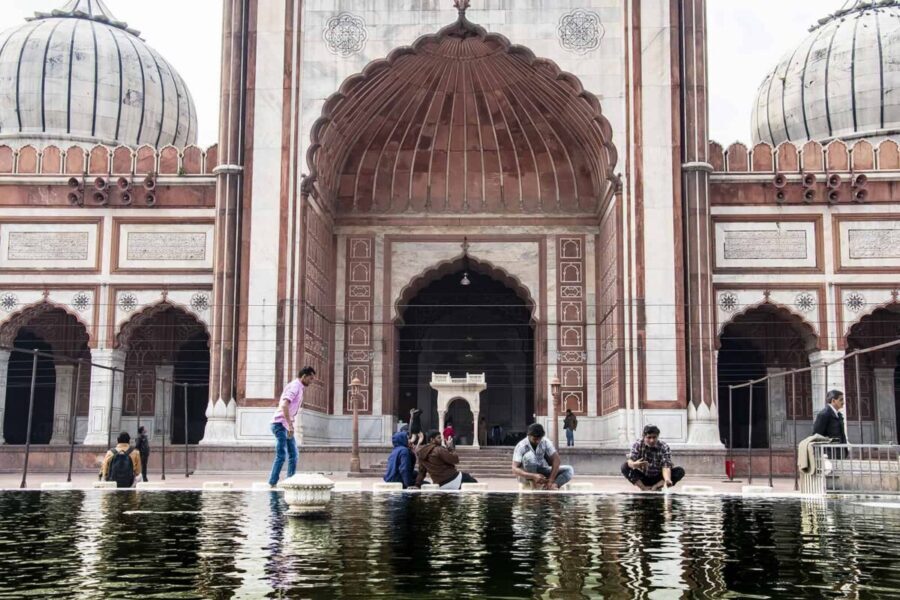
Important: Although the entrance is free, you have to pay 300 INR per device (for each camera, mobile phone, and video camera). They strictly check it, and you cannot take the devices inside for which you did not buy the ticket. If they find it in your bag, you will get a fine. Make sure that you pay for all the devices you carry with you and leave the ones you do not need outside if you can solve that.
Tip: Go on a cycle rickshaw ride from the outside of the mosque through the bazaars of Old Delhi. It will be one of the best experiences during your visit to Delhi. You learn Indian life from very close with all the smells and noises. You stand in the middle of the crazy traffic jam with millions of other vehicles around Chandni Chowk but still feeling safe.
India Gate – A landmark of New Delhi
The 42-meters-high India gate was built of sandstone after the design of the Triumph Arch in Paris. It took ten years to construct the War Memorial that honors all the Indian soldiers who died during World War I and the following war with Afghanistan.
The monument stands in an immense park in the middle of the roundabout. It gets very crowded on Sundays as a popular place for locals to come for a picnic, take a boat ride in the nearby artificial lake, or simply stroll around.
Tip: The gate is in light at night with the surrounding fountains
The tomb of Humayun, the second Mughal ruler (heritage sight)
The tomb of Humayun is a monumental two-storey red sandstone structure dedicated to the second Mughal ruler. The Mughals ruled North and Central India for 300 years (1526- 1857) and built the most famous monuments of India, including the Taj Mahal.
It was the first tomb of such volume for the Mughal rulers. The immense structure stands in the center of a symmetrical garden. The cenotaph of Humayun inside is puritan and faces Mecca according to Muslim tradition.
Opening hours: From sunrise to sunset
Entrance fee: 600 INR
The temples you must see in Delhi
1. Akshardham – do not miss visiting this temple (my personal favorite in Delhi)
The Akshardham temple is a “must-see” attraction. It is a huge cultural, spiritual, and entertaining complex. Indians usually spend at least half a day here with their families. In 2007 the temple was registered in the Guinness Book of World records as the largest Hindu temple. Since then, however, the Akshardham temple in New Jersey outrivaled its Indian counterpart. The water and light show at night is so spectacular that it easily beats the highly promoted versions in Dubai or Singapore.
Find all the information about visiting the Akshardham temple here
Lotus temple – the place of worship for Bahai people
The temple of the Bahai religion takes an extraordinary lotus flower form. The Bahai followers donated for the construction of the temple. You may not have heard much about the youngest religion founded by the prophet Al-Bab in 1844. Strangely, it comes originally from Persia and has spread to almost every country in the world, and still, Iran is the only country to prosecute its followers. They say it contradicts the Shia Islam doctrines.
The interior of the temple is intentionally simple to reflect the principles of the religion. It wants to unify the followers of all beliefs and offer them a place to pray together. Everybody can study his holy book, be it the Bible, the Quran, or the Mahabharata. That is the reason why the temple is free from symbols and signs of any religion. The Bahai people consider every religion as equal and acknowledge all Prophets.
Opening hours: Tuesday- Sunday 09:00 am – 7:00 pm (summer), 09:00 am – 5:30 pm (winter), closed on Monday
Entrance fee: free of cost
Tip: If you have time, there is a Krishna (ISKCON) temple nearby. You can spot it from the terrace of the Bahai temple. The Krishna devotees are also Hindus as Krishna is a Hindu God. But they primarily dedicate themselves to Lord Krishna. The members are happy to tell you about their beliefs and customs.
Gurudwara Bangla Sahib – the largest Sikh people in Delhi
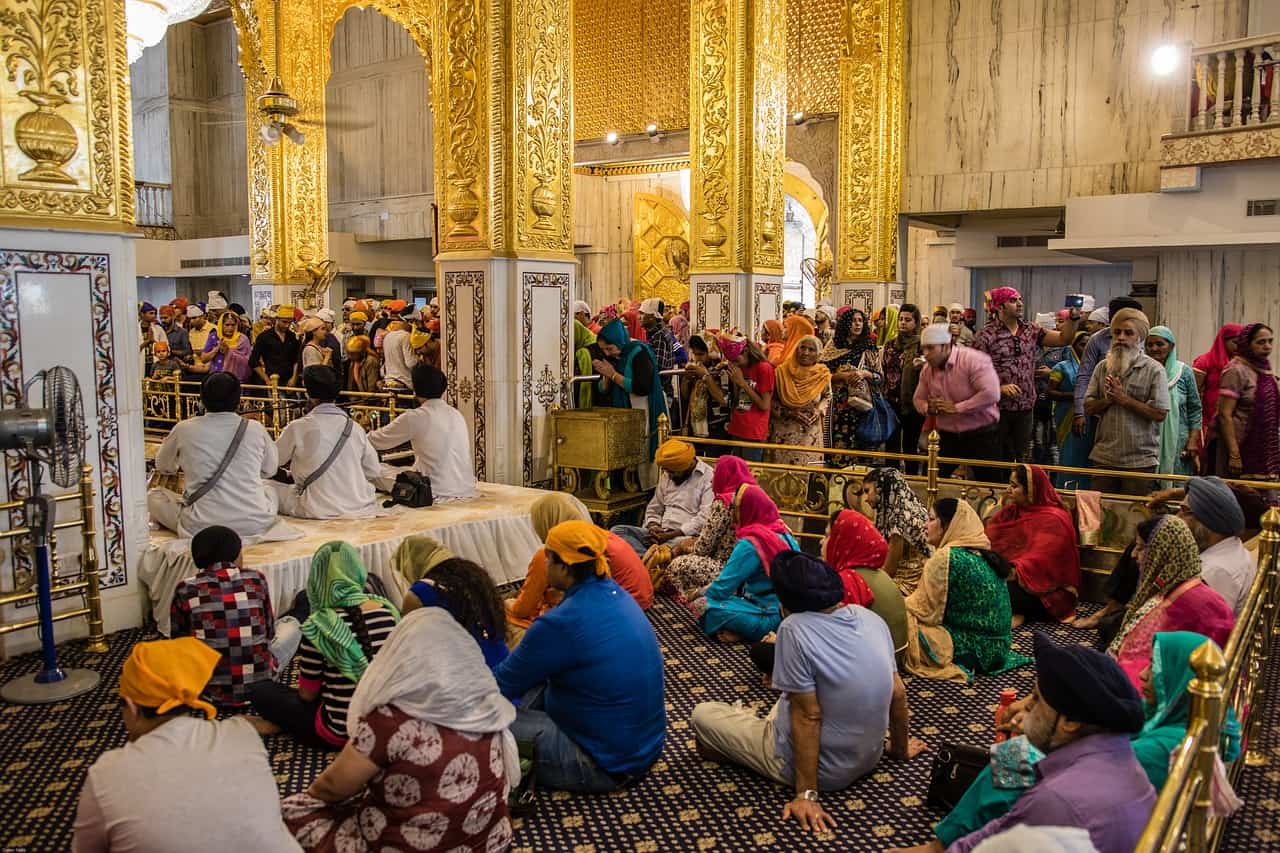
This temple is a must-see in Delhi. Both Hindus and Sikhs come for a visit during the day or in the evening. Sikh people make up only 2% of the total Indian population, but they are a majority in one single state, Punjab. 90% of the Sikh people live in India. However, many immigrated to the United Kingdom although the British answered with a brutal massacre to their peaceful protests in India in 1919. The British commander, Reginald Dyer ordered to shoot into the crowd targeting the few gates that remained open through which people tried to escape. There is no precise information on how many people lost their lives that day. The British reported 379 deaths, but 1300 may have lost their lives, including women and children.
Read this complete guide about the Sikh lifestyle, religion and history
All the Sikh temples keep a copy of their holy book (Granth Sahib) under an ornamented baldachin. The water-pool adjacent to the temple is where the Sikhs go for ritual bathing. According to the legend, the eighth Sikh Guru, Guru Har Krishan, carried the water from the well of the house that once stood here and healed the local people during the epidemic.
Opening hours: always open
Entrance fee: free of cost
The rules to visit a Sikh temple
- Remove your shoes and socks, and deposit them! You can only enter the temple barefoot.
- If you have luggage, there is a place to deposit it.
- Women have to cover their heads with a scarf or kerchief given at the entrance. Men also have to cover their heads with the kerchief. Baseball caps are not accepted.
- You cannot take any cigarettes or lighters to the temple.
- As a general rule in India, dress modestly, cover your knees and shoulders.
- It is not allowed to take photos inside the temple in most cases.
Tips for your visit:
- As part of the temple complex, Sikh people maintain a community kitchen (langar) for everybody who wants to eat. Thanks to the Sikh donations, they can serve thousands of portions every day. Everybody is welcome to sit on the carpet and have some freshly made dal (lentil), rice, and chapatti.
- The temple is always open and is even more beautiful with the lights in the evening.
Laksmi Narayan (Birla) temple – the red and yellow sandstone Hindu temple
Close to the Gurudwara Bangla Sahib, the Lakshmi Narayan temple is a modern but stunning Hindu temple. Mahatma Gandhi opened it in 1933 on the condition that the „untouchables” would not be excluded. They are at the bottom of the caste system and face humiliations constantly up to now.
The complex includes plenty of small mandirs (shrines) and even a Sanskrit school. The Hindu mythological stories depicted on the walls give a great introduction to Hinduism.
Opening hours: 4:30 AM – 1:30 PM and 2:30 PM – 9:00 PM
Entrance fee: free of cost
Note: No photos are allowed, and you have to deposit them in the locker.
What are the romantic places in Delhi?
Delhi is a green city with extensive parks that are popular places for couples and families to relax.
The garden of 5 senses
The garden opened in 2005 to create a complex experience for visitors that affect their five senses. A winding walkway leads through the different garden sections with 250 types of plants, Banjan trees, and frangipanis. Pools of lilies, bamboo and herb gardens, exotic flowers, sculptures, and fountains make it an enjoyable place.
Location: Said-ul-Ajaib, Mehrauli-Badarpur Road, New Delhi, India
Opening hours: 9 am- 6 pm/7 pm
Entrance fee: 30 INR for adults, 10 INR for children (up to 12 years of age), 10 INR for senior citizens
The Lodi gardens
The favorite park of the Delhiites to have a picnic and walk around in a well-maintained public park.
The main highlights of the Lodi parks are the monumental domed tombs of some Afghan rulers, including that of Sikander Lodi from the 16th century. These tombs are among the first Muslim tombs built in India and inspired the monumental tomb of Humayun.
Opening hours: 5 am- 8 pm
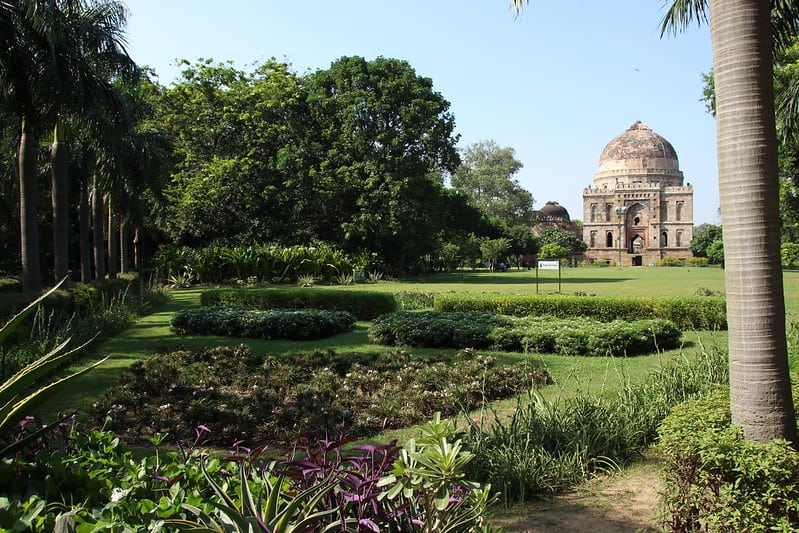
The Buddha Jayanti park
The park was constructed to mark the 2500th anniversary of the birth of Buddha. Now it is a romantic place for couples. In 1964, the ex-Prime Minister of India, Lal Bahadur Shastri planted a Bodhi tree delivered from Sri Lanka. Buddha attained the state of Nirvana under a Bodhi tree in the Indian city of Bodh Gaya. As the birthplace of the religion, Buddhism is thus strongly related to India. Today there is only an insignificant number of Buddhists in the country and spread more extensively in the neighboring countries. Another attraction of the park is the 8-feet copper statue of Lord Buddha.
Opening hours: 6 am- 8.30 pm except Sundays
The Nehru Park
A touristic spot in the diplomatic enclave of New Delhi. The park carries the name of the first Prime Minister, Jawaharlal Nehru. Early mornings yoga fans get together, and many come for jogging.
Purana Qila – the oldest Fort in Delhi
A romantic place with the ruins of the oldest Fort in Delhi dates to the 16th century. The Fort was one of the first constructions of the Mughal Emperors. Humayun, the second Emperor, slipped and fell from the second storey when he was about to go for the daily prayer. An adjacent lake is an ideal place for couples to go on a romantic boat ride.
Opening hours: 7 am-5 pm
The Kingdom of Dreams (KOD) – exclusive Indian style live performance
An exclusive, probably the most romantic program Delhi can offer. The Kingdom of Dreams opened as a cultural center with two international standard theaters and an art-craft-and food boulevard. The restaurants are designed in the architectural style of the different Indian states and offer their typical dishes. The couples arrive in elegant dresses to enjoy the programs at the palace style venue.
The Indian film icon, Salman Khan opened the IIFA Buzz lounge, a Bollywood-themed bar inside the Kingdom of Dreams.
The highlight of the visit are the two types of theater shows that welcome visitors every day except Mondays.
Jhumroo Show: Tuesday, Thursday and Saturday at 7 pm, Wednesday and Friday at 2:30 pm
Zangoora Show: Tuesday, Thursday, and Saturday at 2:30 pm, Wednesday and Friday at 7 pm, Sunday at 6 pm
Location: KOG is outside Delhi in the modern business district of Gurgaon. You can reach the Delhi metro or take a cab/autorickshaw to the venue.
Entrance fee: The ticket prices range from 1500-3000 INR depending on the day and the category of the seat.
Delhi a city where you need to spend at least two days seeing the most important things, but you will not be bored even you stay for a week. If you have more questions about Delhi please contact me.
How to plan your trip to India
Book your flight ticket to India: I always use Google Flights, Skyscanner or Wayaway to find the cheapest flight tickets worldwide. To get an extra 10% for your Wayaway Membership Plus program use my discount code VOG
Insurance to India: Safetywing is an affordable insurance that covers COVID-related issues as well.
: Book your train, bus and domestic ticket in India:
Check Indian Railways website for train tickers, or 12Go which gives you the best option (train, bus, and flight) based on the city of departure or arrival.
Book accommodation in India: Booking.com and Hostelworld.com offer a wide choice of low and higher-budget hotels.
Local tours and tour packages: Viator and GetYourGuide offer transfers and several one or multi-day tours.

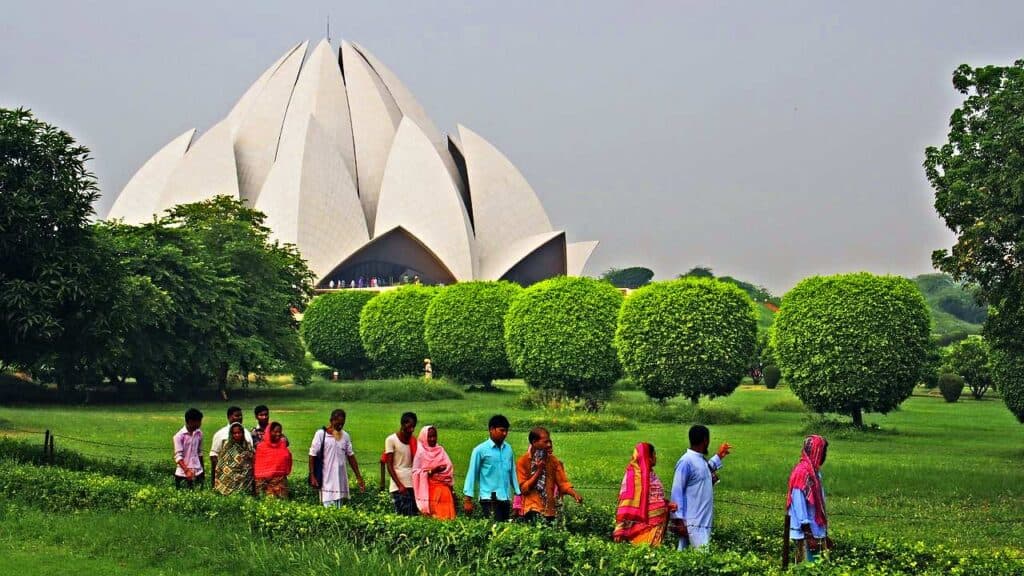

Pingback: The ultimate guide for a two-week itinerary including the Golden Triangle in India | Voice of Guides
Pingback: Where to go shopping in Delhi – avoid the tourist traps! | Voice of Guides
Pingback: The best museums in Delhi that you should consider visiting | Voice of Guides
Pingback: The highlight of a visit to Delhi: The Akshardham temple | Voice of Guides